Table of Contents
This case study is from the people at Tank, a digital PR agency that helps clients to realise their digital ambition by marketing beyond the obvious. Founded in Nottingham in 2010, Tank is an established team of expert marketers and PR people working for clients across the UK, EMEA, Australia and the US in a rich variety of sectors.
One of the challenges as a digital PR agency is to find stories within a niche business that will work across multiple relevant industries and audiences – and to get press coverage and all-important links to your client’s content.
We’re finding that journalists are increasingly hesitant to link out from their own websites and so we need to find new ways to encourage them to do so.
Something that we’ve been focussing on heavily at Tank is data-driven PR, in particular, utilising internal data. Our clients are often sitting on a “goldmine of data” whether this is sales stats, user trends, or even a rise in sales for a specific product.
This kind of information can be turned into a powerful campaign that will cut through the noise of other PR agencies trying to get journalists to publish their content.
Leveraging this niche data for quality content and delivering it with tailored hooks for different verticals makes for successful content campaigns and even award-winning ones, as was the case for Tank.
Amplifying Internal Data to Drive Links and Awareness
Some of the best performing content in the media is driven by data. Journalists are even adopting this themselves and so pushing data-driven stories to high-traffic, authoritative press websites is becoming more and more challenging.
We’re now at a stage where if you provide data that’s easy enough for a journalist to get themselves, they’re unlikely to cover the story – let alone link to you.
Instead, with data that only your business has access to, you can create solid and unique content to build a campaign around, and show yourselves as a reputable source.
This is why internal data is so powerful in digital PR campaigns, as well as for establishing long-term trust in your brand from other websites and a broader audience.
When working on a digital PR campaign, it’s important for us to always consider the brand at heart. What are the common issues for the client’s customer base? How can we help them, and ensure that we get content and links in media that their target customers read?
For one HR software client, whose target audience is HR managers and leaders, a common issue is staff not taking annual leave, which can lead to burnout, illness, or other challenges.
As such, we asked the client for data from 2,000 businesses they work with on the number of annual leave days taken.
We worked with their data and GDPR team to produce a data brief, detailing the specifics of data we wanted to look at, such as annual leave taken in the last year but also retrospective data from the last five years, allowing us to draw formed conclusions.
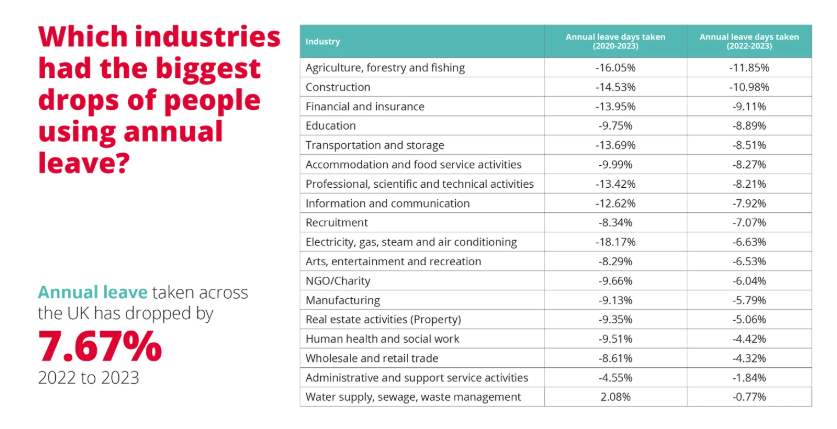
It was also important for us to gain links in the business and trade press since many business leaders and decision-makers looking for HR software might be reading these instead of HR press. To target these, we asked for an industry breakdown of annual leave taken, to allow us to create a sector-by-sector comparison.
Securing the raw data, we then analysed the number of annual leave days tracked – anonymously – at 2,000 SMEs to build a report surrounding UK annual leave.
The report had many layers, including:
- The drop in annual leave days taken nationally in the last year
- The drop in annual leave days taken nationally in the last five years
- An industry analysis of how annual leave is taken across sectors, with rankings
- The most common days for people to take annual leave, not including days surrounding bank holidays
We accompanied this data with commentary from the client on how HR leaders can encourage employees to take their full amount of given annual leave, to ensure we maximised our chances of getting relevant links back to the site.
With so many different stories to issue for this report, we needed to make sure that we were organised in our approach to sell-in, due to there being over 15 separate press releases to accompany the campaign.
Tailoring the Digital PR Approach with BuzzStream
Our team already uses BuzzStream for tasks like scheduling outreach for the optimal time that journalists will be checking emails, or for ensuring our follow-ups are sent on time.
Using BuzzStream we can easily track and measure stats such as open rate and when journalists last opened our sell-ins – to ensure we know when an email is hitting, and when it might need to be tweaked.
BuzzStream also tracks “relationship status” in projects so that you can see the status of any email at a glance, and be sure to not accidentally message the same contact a colleague might have already reached out to just a few hours ago.
For this campaign, BuzzStream was particularly helpful for split testing and targeting high profile non-media targets.
Split Testing and Tailoring Your PR Content
Split testing is essentially A/B testing, and helps us to push out different versions of our press releases and tailor specific fields and subject lines when sending out to media contacts.
In BuzzStream, for us, this mainly applies to using editable fields in email and subject lines.
In the screenshots below, you can see how we easily issued press releases with different angles for this campaign, ensuring that every single journalist is targeted with a relevant story for their publication on how their industry is affected by the news.
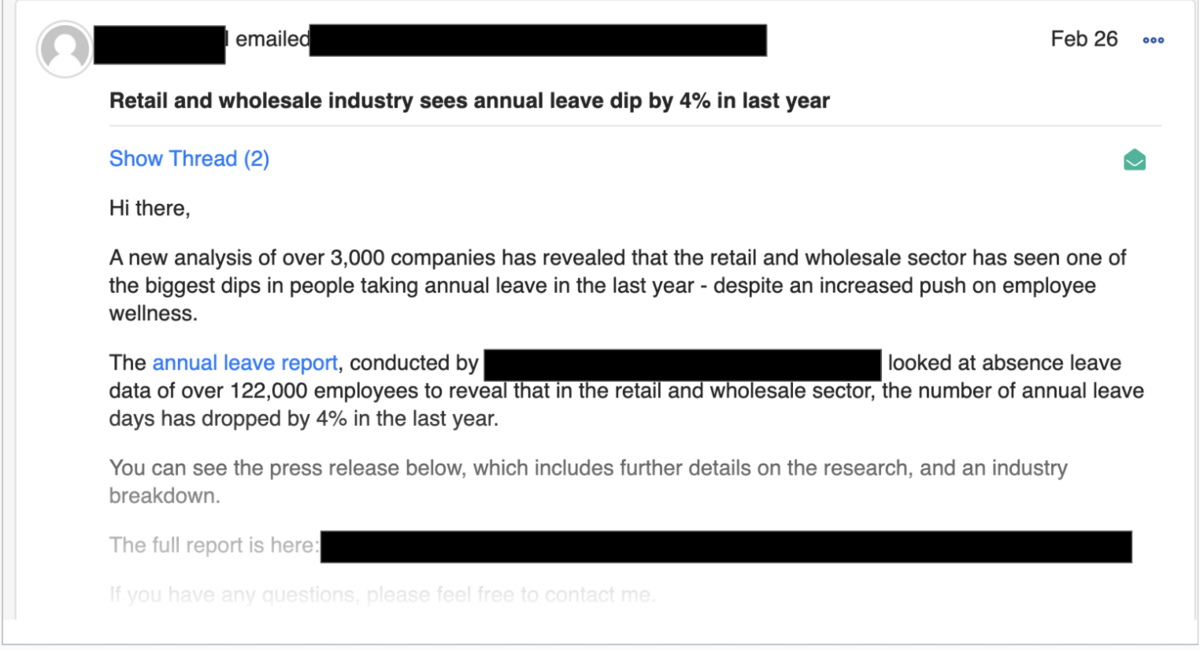
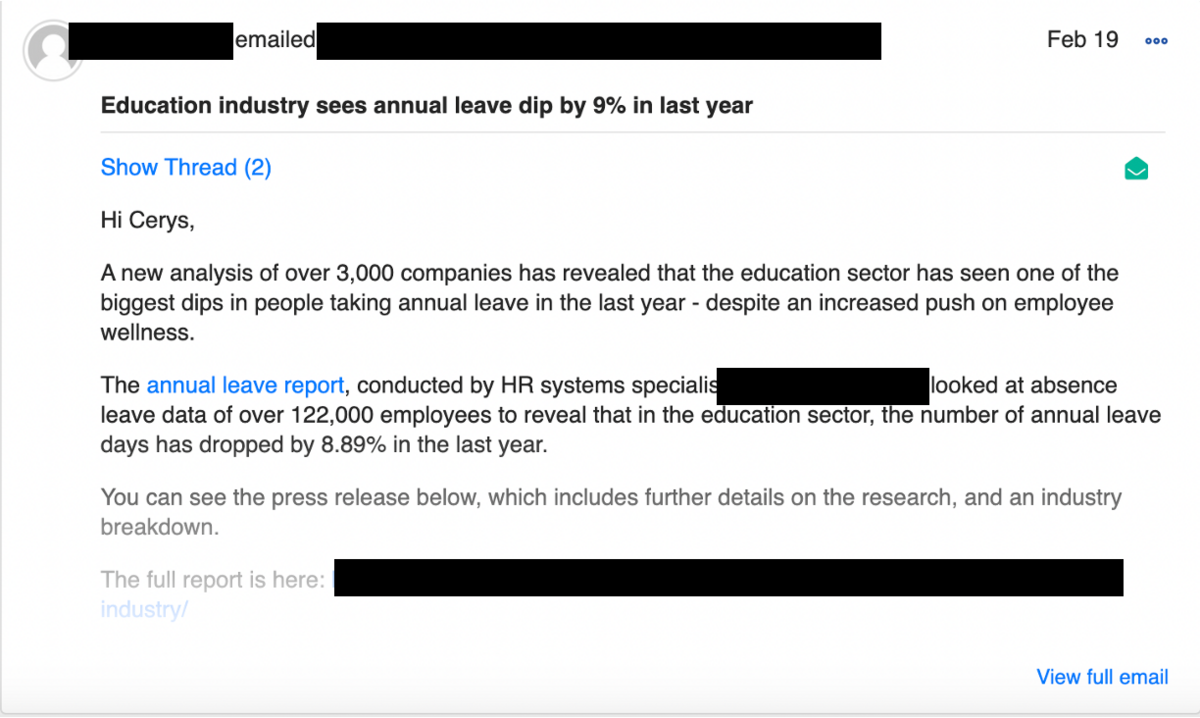
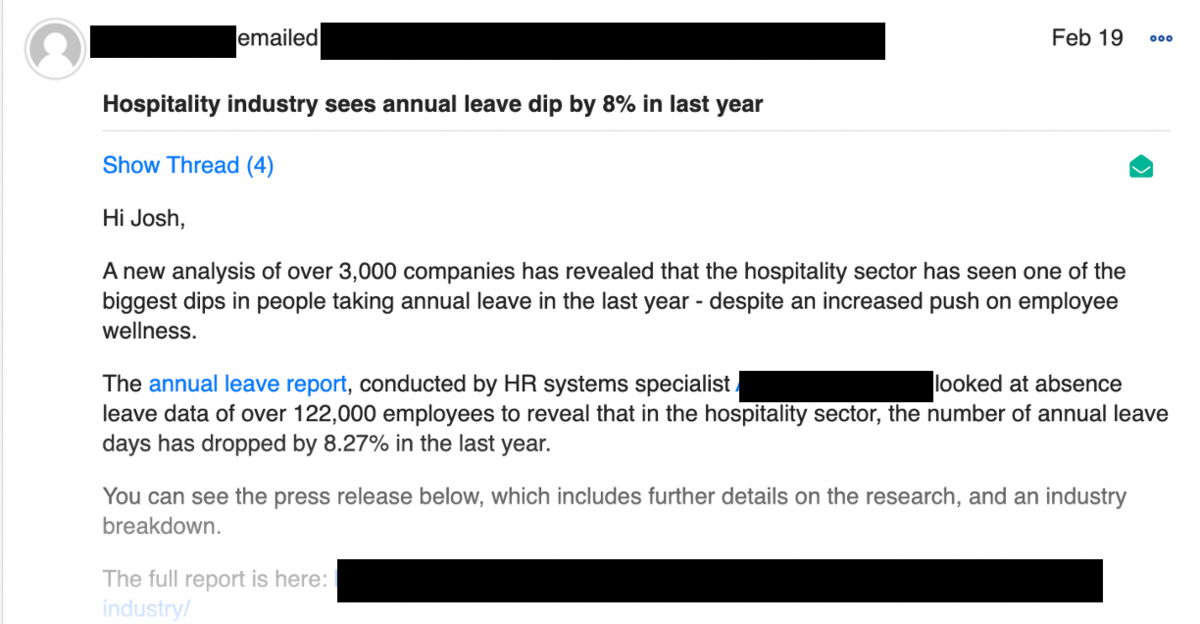
Ensuring Our Media Lists Are Always Accurate
No journalist wants to be emailed with a story that’s irrelevant to them; it’s a waste of time and can harm the relationship for future stories you want to pitch to them.
That’s why we always make sure to research contacts every single time we have a new campaign to sell into the press, to make sure they are still relevant, clean and up-to-date.
Every media list we create is bespoke for each campaign. In BuzzStream, you can either directly create or upload your own list of media contacts as a .csv file and go through to match fields with the applicable columns, such as first name, job role, publication name and URL, to ensure your emails are as personalised as possible.
And, helpfully, if something goes wrong in the upload process, BuzzStream will notice and flag that something doesn’t match up, whether it’s an email address or a first name that looks different to the name in the paired email address.
Once the list is ready, we go in and draft the message that will be sent out, including the editable fields, relevant links and tailored subject line.
Reaching Verticals Outside Your Usual Media Contacts List
As a digital PR agency, tools to reach new audiences are essential. Of course, we wanted to target hyper-relevant media contacts who would want to push this content, such as HR media.
But, to widen reach, we also wanted to target contacts that weren’t on our regular media list to earn the client new domains pointing to its content for organic traffic uplift.
BuzzStream helps us to widen target segments to high profile non-media targets, such as the Chartered Institute of Personnel and Development or even university media departments, and easily keep track of different verticals in separate folders, as you can see in the screenshot below.

Press releases for each vertical are all clearly organised so we can check back to make sure we’re reaching out to the right ones with the right content and see which segments are working well.
Below, we can see what days people were most likely to open one of our press releases, and then compare with others to understand how different sell-ins were working.
Example 1:
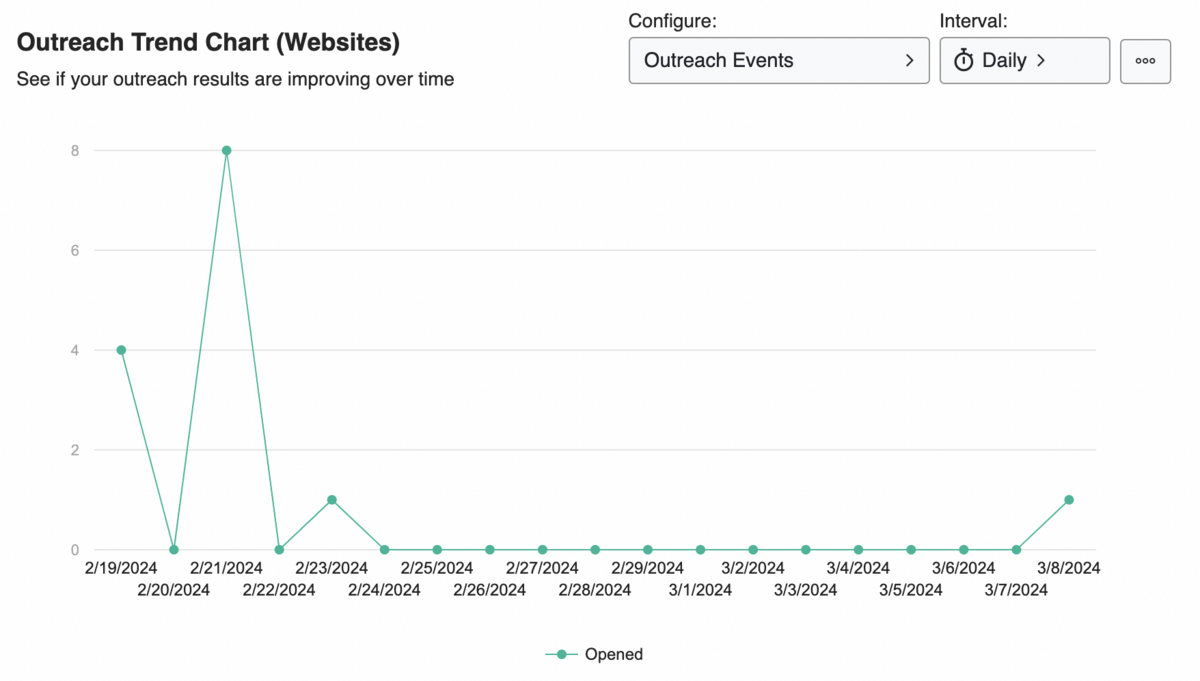
Example 2:
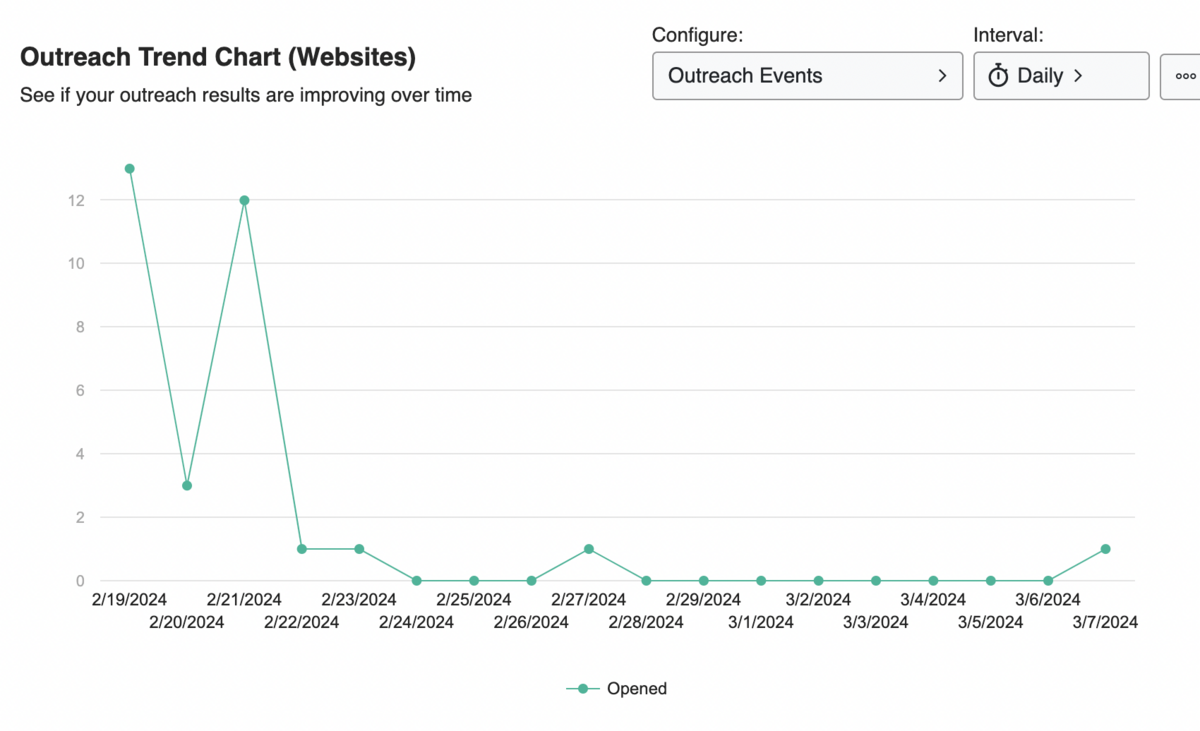
Taking a look at the project insights tab, we can also quickly identify if any segments are under-performing, such as if open rates are low, to maybe pitch with a different angle.
Seeing a clear list of all verticals also helps identify if there are any target segments left to explore.
After a campaign has finished, all of the important insights including open rate data or new contacts are there, documented in a structured way for all the team to see and learn from.
Award Winning Digital PR Agency Work
It feels like a pat on the back when a strategy pays off. Tank has recently been shortlisted for two UK Search Awards for the annual leave report, namely the “Best Use of Content Marketing in a Search Campaign (Large)” and “Best Use of PR in a Search Campaign (Large)” awards.
The campaign secured 80+ backlinks from 68 referring domains and mentions from the likes of Sky News, Tech Radar, and Business Today.
It also earned an impressive 73% uplift in increased traffic from organic keywords. This goes to prove that using internal data in your digital PR strategy and presenting it to varied media verticals in a tailored way can really pay off.
Presenting quality digital PR content with value
Press contacts and people in general love data-driven stories. Facts pique human interest and evoke a reaction, particularly when a customer can relate to the topic. So creating content with multiple hooks and angles is key to getting your campaign out to contacts in a number of verticals.
It is important to not “spray and pray” with mass emails – this will mostly lead to your content being ignored or even earn a blacklist spot on your name from media contacts.
Of course, working in a digital PR agency or similar, things move incredibly fast paced and demands are high.
This is one of the key benefits that BuzzStream offers, saving you time on admin tasks so you can invest more into researching and crafting compelling stories. You don’t need to keep going back to check on media lists or chase contacts. BuzzStream frees up our digital PR team so they can be more creative.
They can sit with clients to dig into their data and find quality content that readers will actually appreciate.

 End-to-end outreach workflow
End-to-end outreach workflow



 Check out the BuzzStream Podcast
Check out the BuzzStream Podcast

